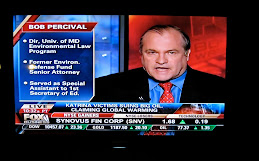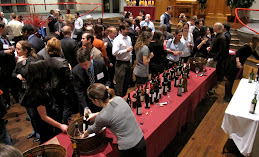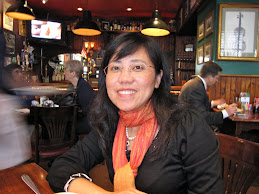The last two months have been so busy for me that I have not been able to find time to update the blog. During the 23rd Conference of the Parties (COP-23) to the UN Framework Convention on Climate Change, which was held in Bonn in November, both Syria and Nicaragua signed the Paris Agreement, leaving the U.S. as the only country in the world not to accept the agreement. Although the Obama administration signed the Paris Agreement and deposited its instrument of acceptance to it, President Donald Trump on June 1, 2017 announced his intention to withdraw the U.S. from the agreement. Under the terms of the Paris Agreement, this withdrawal cannot become effective until November 4, 2020, the day after the next U.S. presidential election.
On October 19th I spoke on a panel (“And Then There Were Nine”) about the Supreme Court and the environment at the fall meeting of the ABA’s Section on Environment Energy and Resources (SEER), which was held in Baltimore. I discussed the Supreme Court’s June 2017 decision in Murr v. Wisconsin and prepared a paper analyzing the voting record of Supreme Court Justices on regulatory takings issues. One striking finding of my paper was that Justice Anthony Kennedy has voted in the majority in all 10 regulatory takings cases in which he has participated.
On October 28, former DOJ Assistant AG John Cruden and I presented our annual Supreme Court review to annual meeting of the American College of Environmental Lawyers (ACOEL) in Charleston, South Carolina. After the meeting concluded, my wife and I ventured out to the Isle of Palms to examine the property that had been owned by David Lucas in the Supreme Court’s landmark Lucas v. South Carolina Coastal Council case decided in 1992. Although Lucas had rejected the state’s conclusion that his beachfront property was endangered by sea level rise, it is now right at the edge of the ocean. After the state bought out Lucas, they allowed two homes to be built on the properties. Even though Hurricane Irma passed 200 miles to the west of Charleston, these homes were severely damaged by it and were boarded up when we visited them. Meanwhile the Isle of Palms has been seeking millions of dollars from the Federal Emergency Management Agency (FEMA) for beachfront replenishment projects.
On November 10 I attended the wedding of a former student, Lori Schectel, in Palm Springs, California. Lori now lives in San Francisco and is responsible for environmental permitting for Contra Costa County. The day after the wedding I toured wind and solar energy farms north of Palm Springs which constitute a veritable museum documenting the development of improved renewable energy technologies over the last several decades. When leaving Palm Springs I flew over the portion of the wind farms that also is being used to recharge the underground aquifer with some of the surplus runoff from last year’s drought-ending rainfall in California. On November 20 I showed some of the photos I took of the aquifer recharge effort at a luncheon in Queenstown, Maryland for the multidisciplinary CONSERVE water reuse project I am involved in. From November 30-December 3 I was back in California, touring Napa antd Sonoma to support the efforts of their wineries to recover from the fires.
On November 16 & 17 Maryland’s Environmental Law Program hosted a summit of U.S. environmental law clinics. Representatives of thirty of the 62 U.S. environmental law clinics attended the conference. The participants focused on how to improve collaboration among the clinics to maximize their impact. The conference concluded with Georgetown environmental clinic director Hope Babcok delivering a stirring call to action. Video of her presentation is available online at: http://video.law.umaryland.edu/OpenPlayer.asp?GUID=9BDE1BD2-F0DC-4FD1-9A41-240603328C5A
On Saturday November 18 I spoke on a panel on “Environmental Law Without Congress at the Federalist Society’s National Lawyers Convention in Washington, D.C. I noted that virtually all the major federal environmental statutes had been passed by overwhelming, bipartisan majorities in Congress. Now legislative gridlock has plagued environmental legislation, but bipartisan compromises produced laws comprehensively updating the Federal Insecticide, Fungicide and Rodenticide Act (FIFRA) in 1996 and the Safe Drinking Water Act during the same year. I also reviewed the factors that contributed to the 2016 nearly unanimous adoption of the Frank Lautenberg Chemical Safety for the 21st Century Act in June 2016. Video of my presentation is available online at: https://www.youtube.com/watch?v=7AJB4MTC3Ns
On Monday I am flying to Amsterdam for the Dutch royal family’s Prince Claus Fund awards, which will be presented at the Royal Palace on December 6. Chinese environmentalist Ma Jun is winning one of the top awards and the Prince Claus Fund asked me to prepare a tribute to him.

















